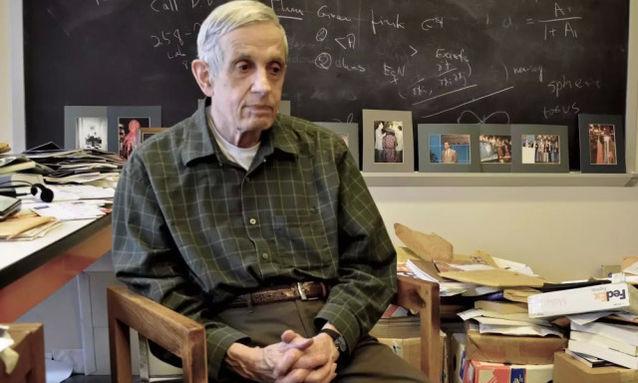As he struggled with ill health, however, his equilibrium became more and more central to the discipline.
然而,就在他與病痛搏斗時,他的均衡之于這門學科變得越來越核心了。
The share of economics papers citing the Nash equilibrium has risen sevenfold since 1980, and the concept has been used to solve a host of real-world policy problems.
自1980年以來,引用納什均衡的經濟學論文的比例上升了7倍。同時,這一概念還被用在了解決現實生活中的一系列政策問題上面。
One famous example was the American hospital system, which in the 1940s was in a bad Nash equilibrium.
一個著名的例子是美國醫院體系。20世紀40年代,這一體系處于一種糟糕的納什均衡之中。

Each individual hospital wanted to snag the brightest medical students.
每一家單獨的醫院都想爭取到最好的醫學學生。
With such students particularly scarce because of the war, hospitals were forced into a race whereby they sent out offers to promising candidates earlier and earlier.
由于這類學生因為戰爭而非常稀缺,各家醫院之間被迫進入了一種越來越早地給有前途的候選人開出價碼的競爭之中。
What was best for the individual hospital was terrible for the collective: hospitals had to hire before students had passed all of their exams.
個別醫院的最佳是醫院這一集體的噩夢:醫院不得不在學生通過所有考試前雇傭他們。
Students hated it, too, as they had no chance to consider competing offers.
同時,由于沒有機會考慮競爭開價,學生也痛恨這一體系。
Despite letters and resolutions from all manner of medical associations, as well as the students themselves, the problem was only properly solved after decades of tweaks, and ultimately a 1990s design by Elliott Peranson and Alvin Roth (who later won a Nobel economics prize of his own) .
盡管有來自學生自身以及各種醫療協會的信函和決議,這個問題在經歷了數十年的微調后,并且最后是由埃利奧特·佩蘭森和阿爾文·羅斯 (阿爾文·羅斯后來獲得了自己的諾貝爾經濟學獎) 在上世紀90年代的一個設計才得以恰當地解決。
Today, students submit their preferences and are assigned to hospitals based on an algorithm that ensures no student can change their stated preferences and be sent to a more desirable hospital that would also be happy to take them, and no hospital can go outside the system and nab a better employee.
如今,學生發出他們的意向,然后再根據一種在確保沒有學生能夠改變既定傾向的同時,還能夠保證學生是被派往更渴望得到他們因而也會更樂意接收他們的醫院,并且還能夠保證沒有醫院能夠跳出這一體系去爭搶更好的雇員的算法被派往醫院。
The system harnesses the Nash equilibrium to be self-reinforcing: everyone is doing the best they can based on what everyone else is doing.
這個體系利用納什均衡實現了自我強化:每一個人都在根據其他每一個人正在做什么而盡可能地做事。
Other policy applications include the British government's auction of 3G mobile-telecoms operating licences in 2000.
其他的政策應用包括英國政府在2000年的3G移動通訊運營牌照的拍賣。
It called in game theorists to help design the auction using some of the insights of the Nash equilibrium, and ended up raising a cool £22.5 billion ($35.4 billion) —though some of the bidders' shareholders were less pleased with the outcome.
當時,它征召了多位博弈論專家,運用納什均衡的一些洞見來幫助他們設計這次拍賣。最終,拍賣被加價到225億英鎊 (合354億美元) ——盡管有些出價者的股東不太滿意這個結果。
Nash's insights also help to explain why adding a road to a transport network can make journey times longer on average.
納什的洞見還有助于解釋為什么給交通網增加一條路會讓旅行時間平均變得更長。
Self-interested drivers opting for the quickest route do not take into account their effect of lengthening others' journey times, and so can gum up a new shortcut.
選擇最快路徑的自私駕駛員沒有考慮他們的行為對于延長其他人旅行時間的影響。因而,可能堵塞一條新的捷徑。
A study published in 2008 found seven road links in London and 12 in New York where closure could boost traffic flows.
2008年發表的一篇論文在倫敦和紐約分別發現了7處和12處關閉了就可能提高交通流量的路口。
The Nash equilibrium would not have attained its current status without some refinements on the original idea.
納什均衡要是沒有對原始思想的某些改進是不會獲得當前這種地位的。
First, in plenty of situations, there is more than one possible Nash equilibrium.
首先,在足夠多的情形下,不止有一種可能的納什均衡。
Drivers choose which side of the road to drive on as a best response to the behaviour of other drivers—with very different outcomes, depending on where they live;
作為對其他司機行為的最佳應對——結果大相徑庭,司機選擇走道路的哪一邊取決于他們住在哪里;
they stick to the left-hand side of the road in Britain, but to the right in America.
在英國,他們堅持走道路的左側;但是,在美國,他們堅持走右側。
Much to the disappointment of algebra-toting economists, understanding strategy requires knowledge of social norms and habits.
讓配備了代數的經濟學家大失所望的是,理解策略需要社會規范和習俗的知識。
Nash's theorem alone was not enough.
單單是納什的理論是不夠的。
A second refinement involved accounting properly for non-credible threats.
第二次改進牽扯到了對于不可信威脅的正確估計。
If a teenager threatens to run away from home if his mother separates him from his mobile phone, then there is a Nash equilibrium where she gives him the phone to retain peace of mind.
如果男孩因為母親把手機拿走就以離家出走相威脅的話,那么,在母親把手機還給他以求得安心的行為中就存在一種納什均衡。
But Reinhard Selten, a German economist who shared the 1994 Nobel prize with Nash and John Harsanyi, argued that this is not a plausible outcome.
但是,與納什和約翰·海薩尼共同分享了1994年諾獎的德國經濟學家賴因哈德·澤爾騰指出,這不是一種貌似合理的結果。
The mother should know that her child's threat is empty—no matter how tragic the loss of a phone would be, a night out on the streets would be worse.
母親應當知道,孩子的威脅是空洞的——不管失去手機多么不幸,露宿街頭只會更糟糕。
She should just confiscate the phone, forcing her son to focus on his homework.
她就是應當沒收手機,強迫兒子用心做作業。
Mr Selten's work let economists whittle down the number of possible Nash equilibria.
澤爾騰的研究讓經濟學家減少了可能的納什均衡的數量。
Harsanyi addressed the fact that in many real-life games, people are unsure of what their opponent wants.
海薩尼闡述了在眾多現實生活的博弈中,人們不確定對手想要什么的事實。
Economists would struggle to analyse the best strategies for two lovebirds trying to pick a mutually acceptable location for a date with no idea of what the other prefers.
經濟學家會設法去分析完全不知道對方的喜好而正在試圖為一次約會選定一處相互都可接受地點的情侶的最佳策略。
By embedding each person's beliefs into the game (for example that they correctly think the other likes pizza just as much as sushi) , Harsanyi made the problem solvable.
利用將每一個人的期望植入博弈的方法 (例如,他們正確地認為對方像喜歡壽司一樣喜歡披薩),海薩尼讓這一問題變得可以解決了。
A different problem continued to lurk.
一個不同的問題繼續隱藏。
The predictive power of the Nash equilibrium relies on rational behaviour.
納什均衡的預測力依賴于理性行為。
Yet humans often fall short of this ideal.
然而,人類經常達不到這種完美。
In experiments replicating the set-up of the prisoner's dilemma, only around half of people chose to confess.
在重復囚徒困境設置的實驗中,只有一半的人選擇坦白。
For the economists who had been busy embedding rationality (and Nash) into their models, this was problematic.
對于一直在忙著將理性 (和納什) 植入他們模型中的經濟學家來說,這很成問題。
What is the use of setting up good incentives, if people do not follow their own best interests?
如果人們不順應自身的最佳利益,設置完美的激勵有什么用呢?
All was not lost.
所有人都沒有輸。
The experiments also showed that experience made players wiser; by the tenth round only around 10% of players were refusing to confess.
這些實驗還表明,經歷讓參與者更明智;到第十輪時,只有大約10%的參與者拒絕坦白。
That taught economists to be more cautious about applying Nash's equilibrium.
這教給經濟學家要對應用納什均衡更加謹慎。
With complicated games, or ones where they do not have a chance to learn from mistakes, his insights may not work as well.
至于復雜的或是他們沒有機會從錯誤中吸取教訓的博弈,他的洞見真可能不是很管用。
The Nash equilibrium nonetheless boasts a central role in modern microeconomics.
然而,納什均衡仍在當代微觀經濟中享有一種核心地位。
Nash died in a car crash in 2015; by then his mental health had recovered, he had resumed teaching at Princeton and he had received that joint Nobel—in recognition that the interactions of the group contributed more than any individual.
2015年,納什在一次車禍中身亡;那時,他的精神健康已經恢復并在普林斯頓重執教鞭,并且接受了那次聯合諾獎——等于是承認:較之個人,集體互動功莫大焉。



